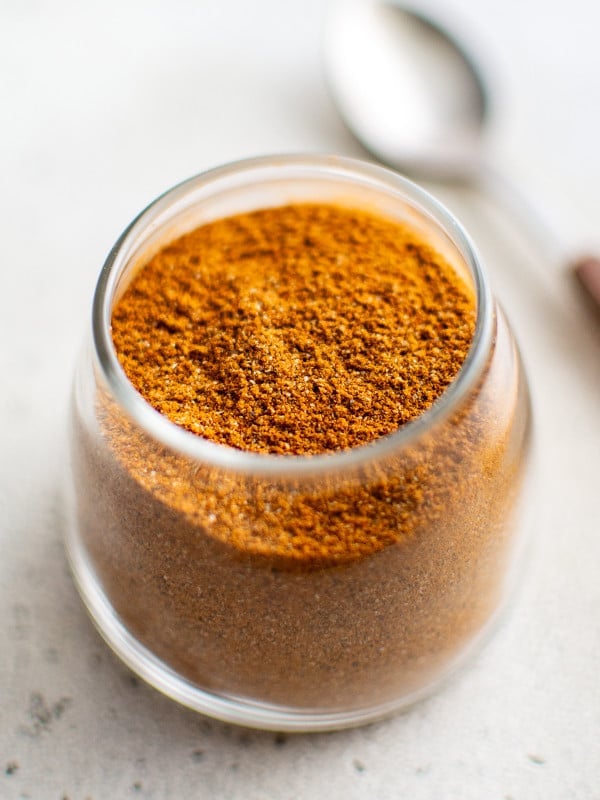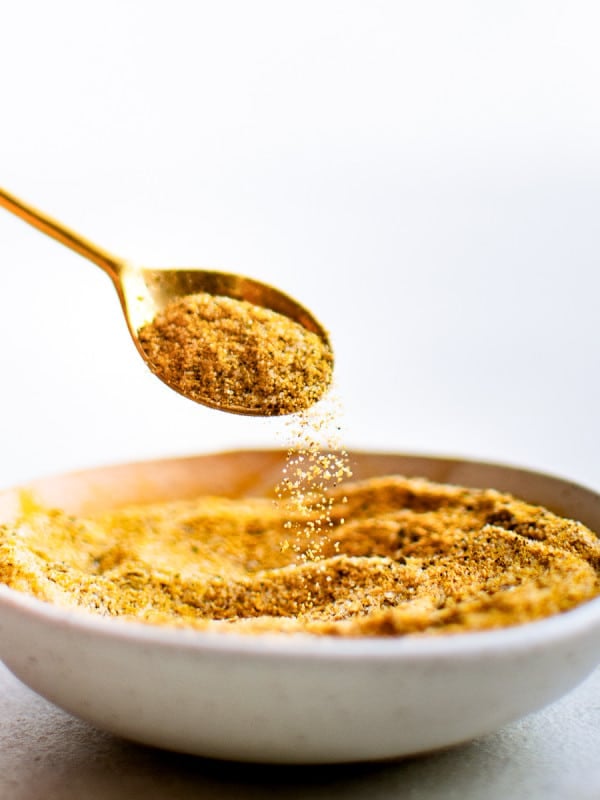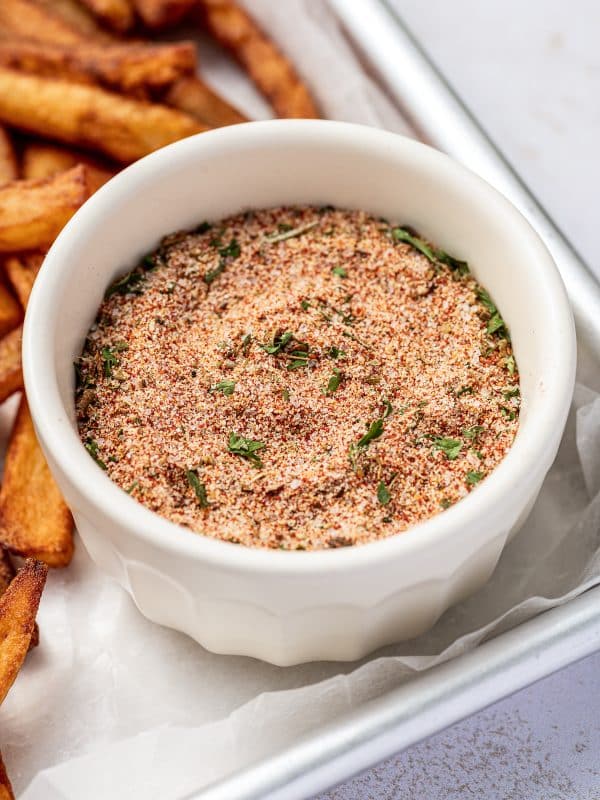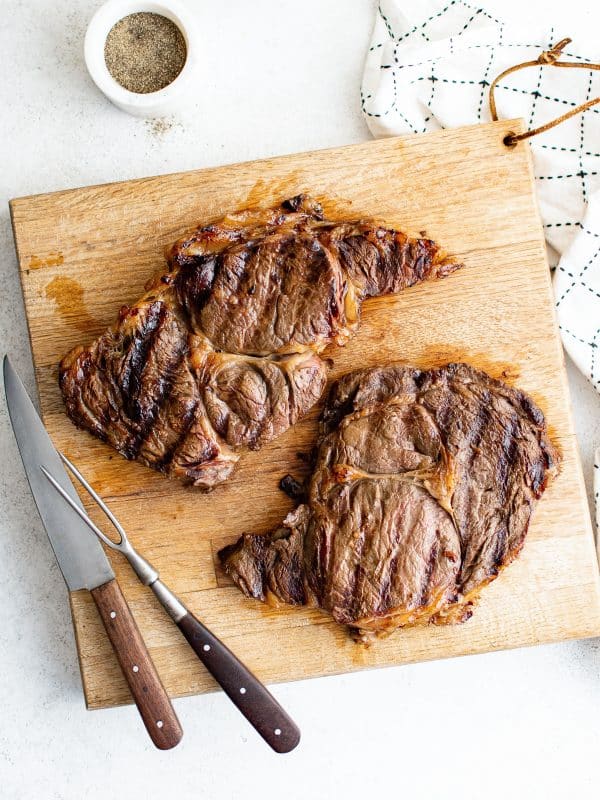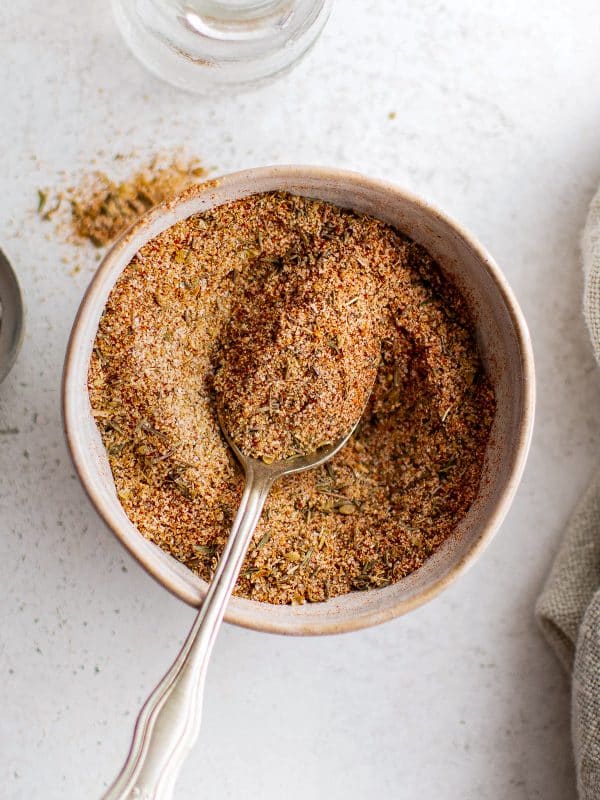This post may contain affiliate links. See my disclosure policy.
Learn how to make Za’atar, a flavorful Middle Eastern seasoning blend made with thyme, sumac, toasted sesame seeds, oregano, marjoram, and sea salt.
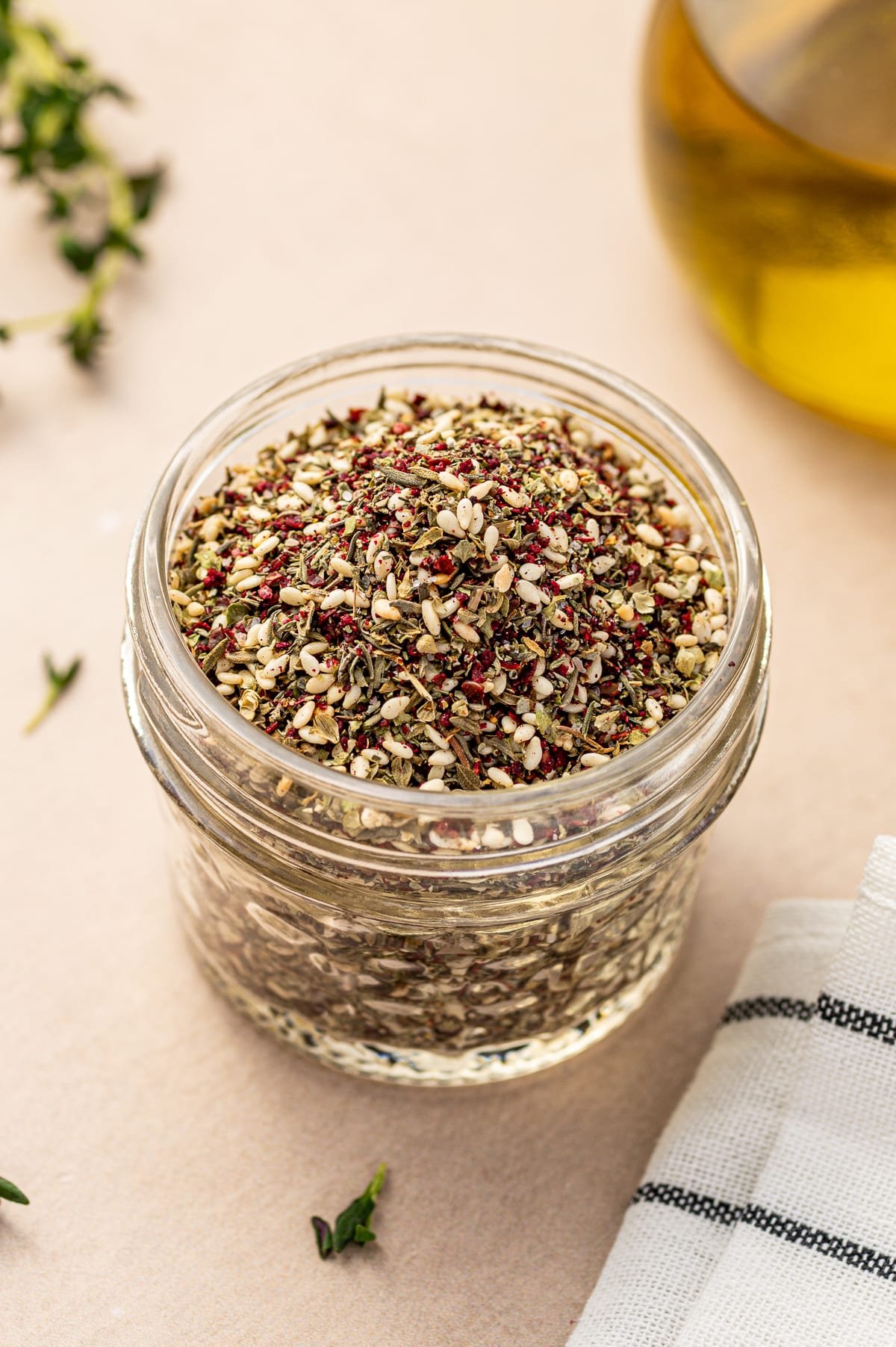
About This Recipe

This za’atar recipe has been a staple in my kitchen for years. A unique balance of earthy, tangy, nutty, herby, and salty flavors, it’s one of my most-used spice blends and my husband’s absolute favorite. It makes everything taste exciting, from homemade hummus and whipped feta dip, to roasted meats and vegetables. It’s absolutely delicious and so simple to make! So even if you’re not sure what it is or how to use it, whip up a batch because I have plenty of ideas for you below.
I hope you enjoy!
Table of Contents
What is Za’atar?
Za’atar is a traditional Middle Eastern spice blend. The exact combination varies by region and household, but it typically includes dried thyme, sumac, and sesame seeds.
The word za’atar (pronounced “zah-tahr”) is Arabic for “wild thyme,” which is also known as hyssop. Hyssop is a wild herb native to the Levant and is closely related to oregano and thyme. Since hyssop isn’t readily available, modern or commercial blends have replaced it with more accessible herbs like dried thyme, oregano, or marjoram.
TL;DR za’atar is two things: A wild herb and a Middle Eastern spice mix.
Ingredients
This za’atar seasoning blend is made with six simple ingredients, several of which you may have already.
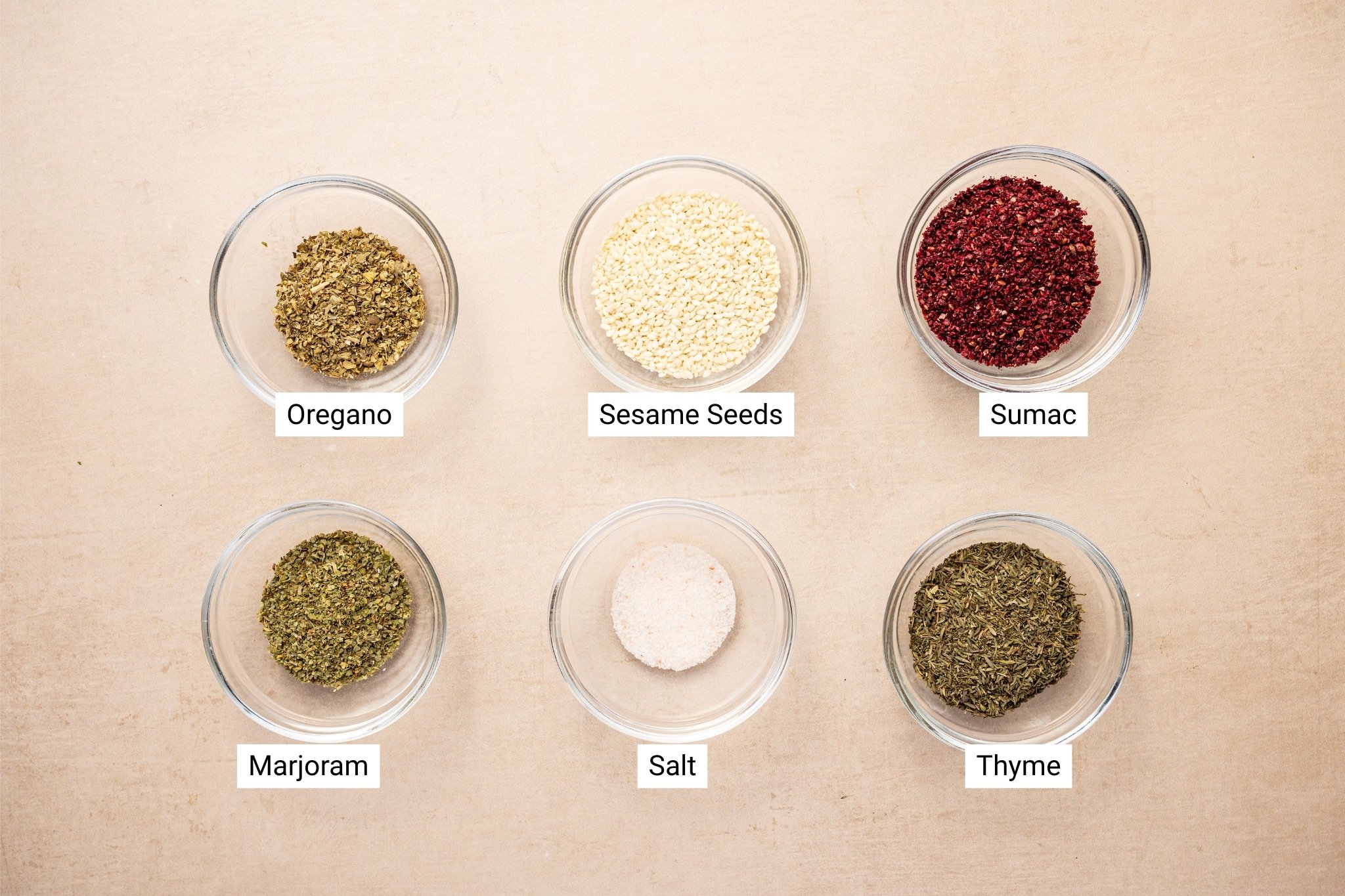
- Dried thyme, oregano, and marjoram: Together, these herbs mimic the flavor of the wild herb known as za’atar (hyssop) which grows in the Levant. They form the earthy, woodsy, and slightly floral base of this spice mix. If you’re missing one, you can increase the others in equal proportion,
- Sesame seeds: We’re lightly toasting the sesame seeds for warm, nutty, and slightly sweet flavor. Sesame seeds add texture and helps balance the earthy flavor of the dried herbs and tangy flavor of the sumac.
- Sumac: Sumac is an absolute must have ingredient. It’s bright, lemony, and slightly fruity. It’s what gives za’atar it’s tangy kick, preventing the mix from tasting flat. I have noticed more grocery stores selling it in recent years, but if it’s unavailable near you, it’s easy to order on Amazon.
- Salt (optional): Salt brings everything together, preserves the blend, and balances the tartness of the sumac. Coarse salt is recommended.
How to Make Za’atar
You can find the full printable recipe in the recipe card below.
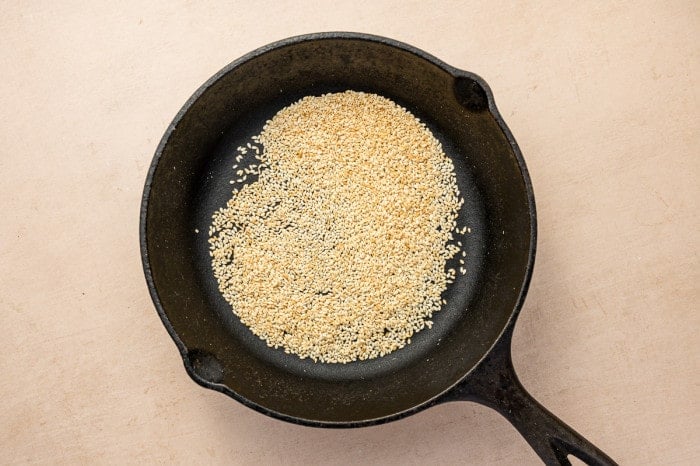
- Roast the sesame seeds in a dry skillet over medium heat for 2–3 minutes, stirring often until golden and fragrant. Set aside to cool.
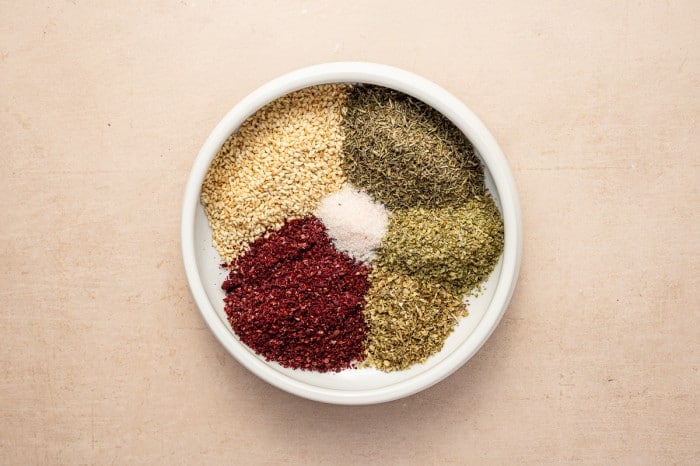
- Once cooled, mix them with the thyme, sumac, oregano, marjoram, and salt. That’s it—your za’atar is ready!
How to Use It
Za’atar is earthy, tangy, and savory, all in one. It is incredibly versatile! I love stirring it into lentil soup or sprinkling it over a simple tomato salad. Of course, there’s a multitude of ways to enjoy this spice blend. Here are some examples:
- Sprinkle it over creamy dips like hummus, labneh, and baba ganoush.
- Mix it with olive oil and use it as a dipping sauce for warm homemade pita bread or soft dinner rolls.
- Use it as dry rub for meats, like chicken, lamb chops, and fish, either on its own or mixed with a little olive oil to form a lovely, golden crust as it cooks.
- Toss it with a little lemon juice and olive oil and add it to recipes like these garlic roasted potatoes, carrots, oven-roasted cauliflower, roasted eggplant, or Instant Pot chickpeas just before roasting.
- Use it to season cooked rice, hard-boiled eggs or scrambled eggs, or even sprinkle it over your next slice of avocado toast!
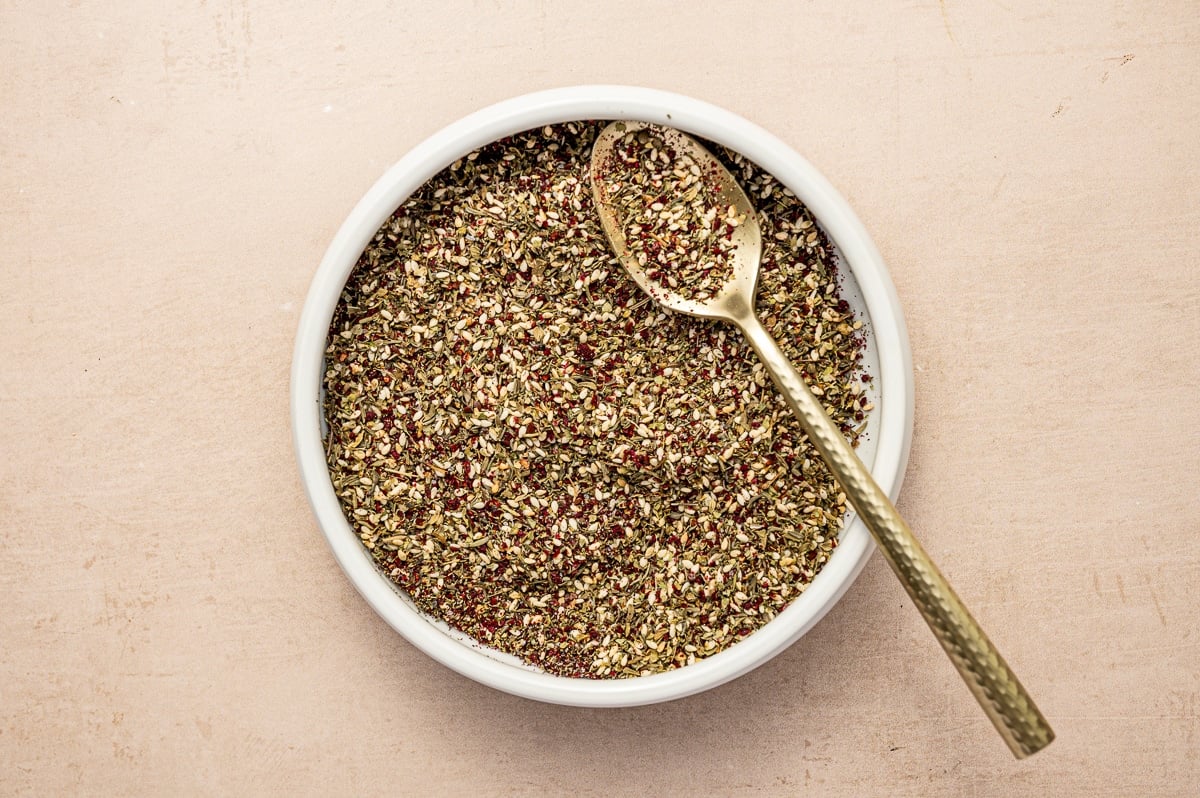
Frequently Asked Questions
Both! You can rub za’atar directly onto meats and vegetables before roasting or grilling, mix it with olive oil and use it as a marinade, or sprinkle it on finished dishes like salad, eggs, or flatbreads.
No, za’atar isn’t spicy. It’s flavorful and aromatic, but not hot. If you’d like a little heat, try adding a small amount of chili flakes or Aleppo pepper.
You’ll want to keep homemade (or store-bought) za’atar seasoning stored in an airtight container in a cool, dark place. For peak flavor, use within 3-6 months. Beyond this point, it won’t go “bad” it just won’t taste as fresh.
More Homemade Seasoning Blends
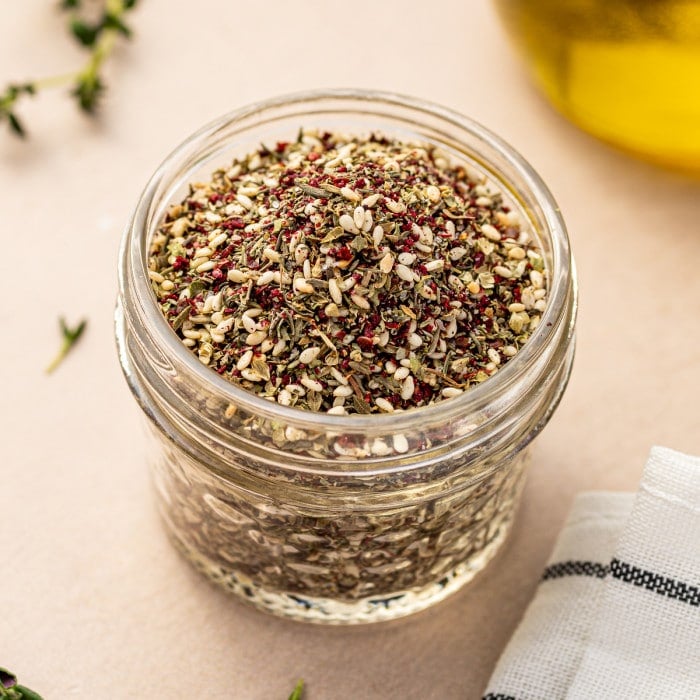
Za’atar / Zaatar Seasoning Recipe
Ingredients
- 2 tablespoon dried thyme, preferably crushed or ground
- 2 tablespoon ground sumac
- 2 tablespoon sesame seeds
- 1 tablespoon dried oregano
- 1 tablespoon dried marjoram
- ½ teaspoon coarse salt
Instructions
- Add the sesame seeds to a dry skillet set over medium heat and cook for 2–3 minutes, stirring frequently. Keep a close eye on them – they can go from golden to burnt very quickly. Remove and set aside to cool completely. Tip: They’re ready when light golden brown and smell warm and toasty.
- Once the sesame seeds have cooled, mix together the thyme, sumac, oregano, marjoram, salt, and cooled sesame seeds in a small bowl.
- Use a funnel to transfer the za'atar seasoning to an airtight jar or spice container. Keep stored in a cool, dark place for up to 3-6 months.
Notes
Nutrition
Nutrition information is automatically calculated, so should only be used as an approximation.


